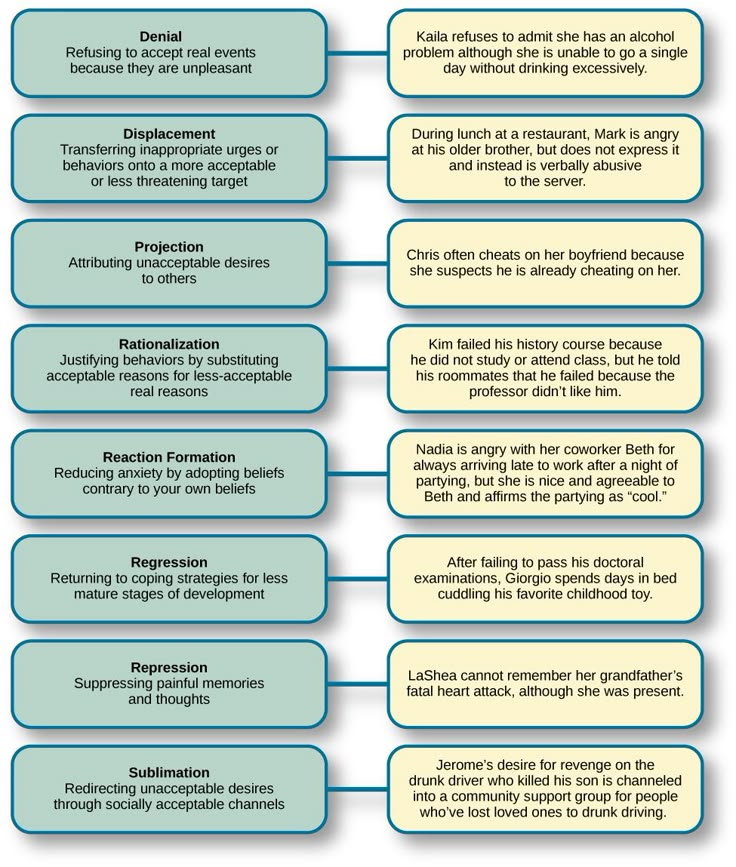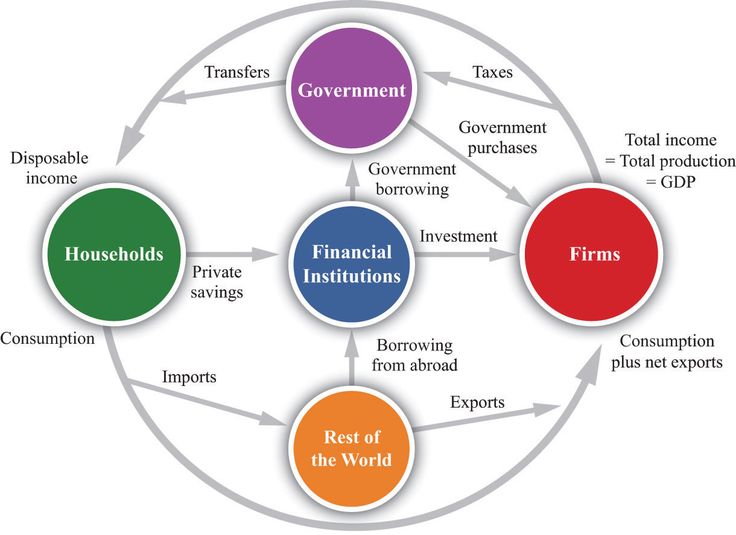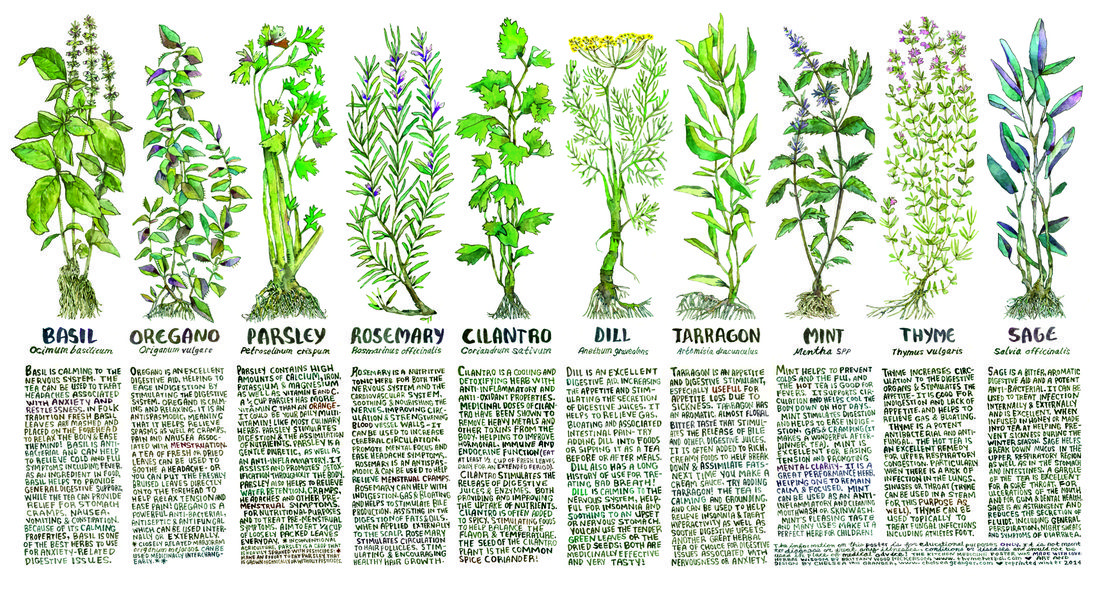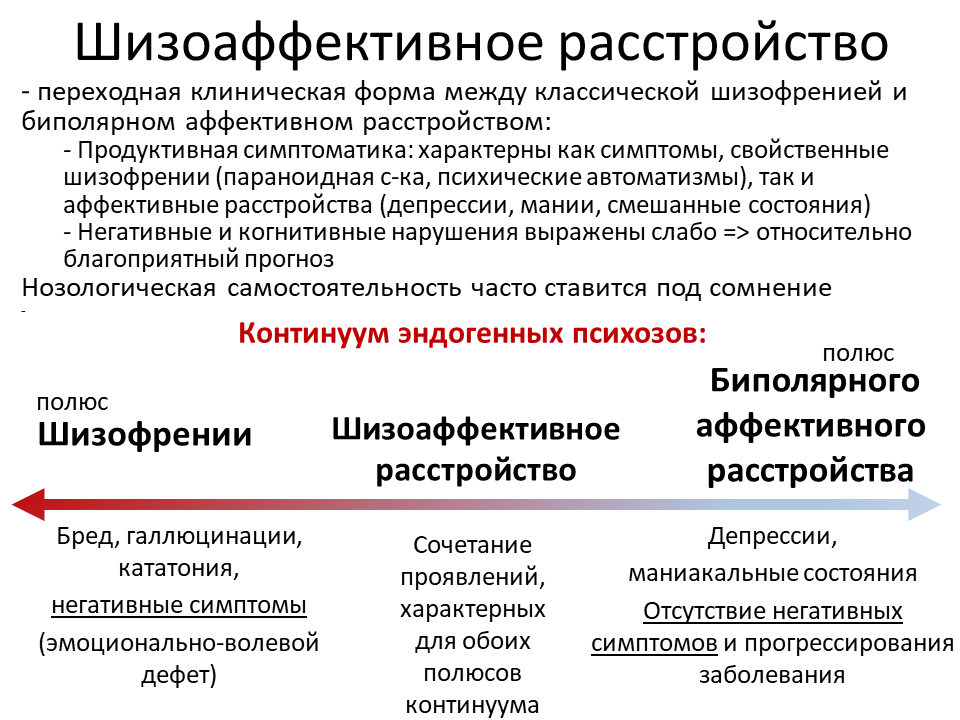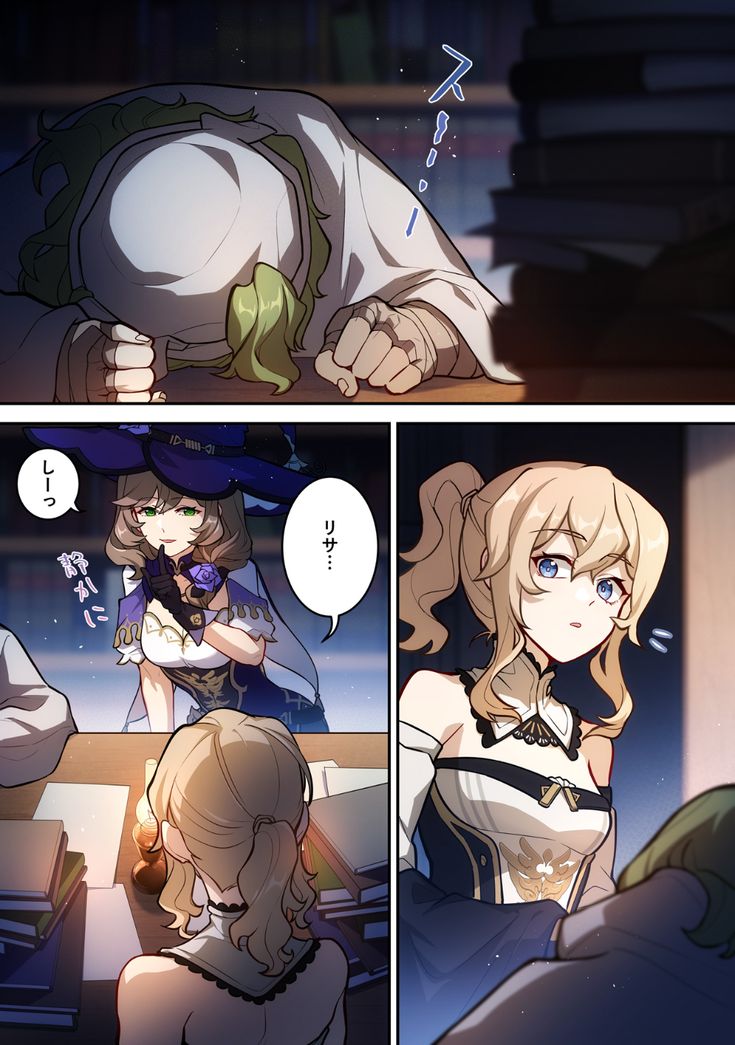Examples of undoing defense mechanism
Undoing: Defense Mechanisms by Sigmund Freud
Undoing: Defense Mechanisms by Sigmund Freud
Undoing is a defense mechanism in which a person tries to 'undo' an unhealthy, destructive or otherwise threatening thought or action by engaging in contrary behavior. For example, after thinking about being violent with someone, one would then be overly nice or accommodating to them. It is one of several defense mechanisms proposed by the founder of psychoanalysis Sigmund Freud during his career, many of which were later developed further by his daughter Anna Freud. The German term "Ungeschehenmachen" was first used to describe this defense mechanism. When translated, it literally means "making un-happen", which is essentially the core of "undoing". Undoing refers to the phenomenon whereby a person tries to alter the past in some way to avoid or feign disappearance of an adversity or mishap.
Freud used undoing to explain some obsessive-compulsive acts, such as a youth reciting the alphabet backwards to undo his sin of sexual thoughts and feelings.
Examples
A person may intentionally push past someone in a shop, but realizing that the person was frail, feel guilty with regards to their behavior. They may try to undo their action by apologizing or offering to help the person.
A girl sends a pleasant Valentine's Day card to an ex-boyfriend with whom she broke up. The girl who sends the card feels guilty about having hurt the other person's feelings. The message is, "I am really not such a bad person." A boy who received such a card thought his ex-girlfriend was being sadistic, trying to make him hurt. But Freud would probably say her unconscious purpose was to convince herself that she was not such a bad person.
Some other examples:
·
Lady Macbeth compulsively washes her hands after committing murder.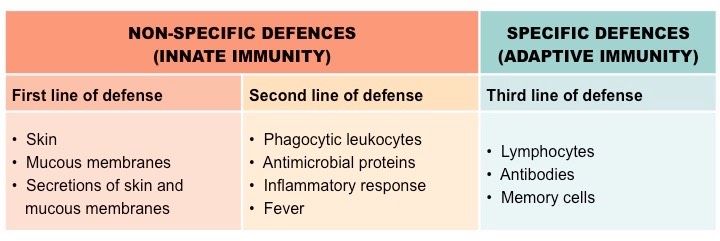
·
A man who has been unkind to his wife buys her flowers (but does not apologize).
·
A person who has barged in front of others in a queue holds the door open for them.
·
A teenager who has been rather noisy tidies the room without having to be asked.
Undoing in Grief
When a person has behaved negatively towards someone or had unpleasant thoughts about that person, they may feel guilt. Afterward, they may try and undo their actions by engaging in opposite actions or thoughts. For example, if I said something hurtful to my best friend I may feel guilty and try to balance things out by paying her four compliments.
Undoing can play a role in grief in a number of ways.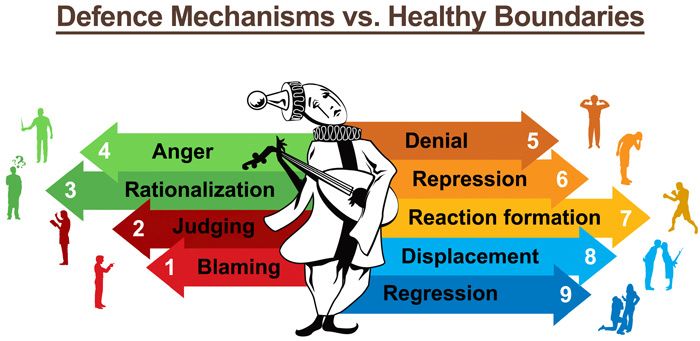 People commonly feel guilty for the negative things they said or did towards the deceased loved one in the past. However, relationships don’t suddenly become one-dimensional because a person has died; they often remain as multifaceted in death as they were in life. Also, people sometimes die before their loved ones have a chance to make amends, and after they die there are very few opportunities to resolve or undo, what has been said, thought, or done.
People commonly feel guilty for the negative things they said or did towards the deceased loved one in the past. However, relationships don’t suddenly become one-dimensional because a person has died; they often remain as multifaceted in death as they were in life. Also, people sometimes die before their loved ones have a chance to make amends, and after they die there are very few opportunities to resolve or undo, what has been said, thought, or done.
Further Implications
Undoing can be used to 'explain away' habits or behaviors that are not in line with an individual's personality. For example, in the case of a person who is well organized in the workplace, yet always forgets to pay bills on time at home, Freudian psychologists could argue that his tardiness with bills is an undoing of his desire to be orderly, or vice versa. Freud has been criticized regarding examples such as this because his theory is so complicated that most problems can be explained by another part of the theory.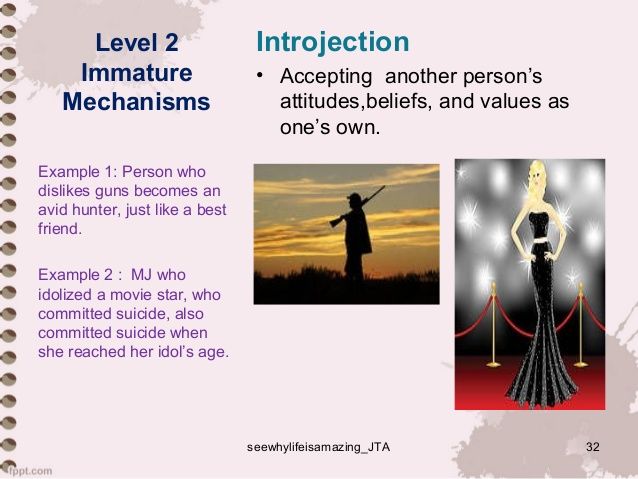
For some people undoing can be used to reduce cognitive dissonance, the uncomfortable feeling created when an attitude and an action, or two attitudes are in conflict with one another.
In criminal profiling the term refers to a pattern of behavior by which an offender tries to undo their crime symbolically, e.g. by painting the face of a person killed by the perpetrator, covering up and decorating the corpse with flowers, personal belongings and jewelry, or folding the hands, imitating a laying-out.
Sources and Additional Information:
https://en.wikipedia.org/wiki/Undoing_(psychology)
https://www.psychologistworld.com/freud/defence-mechanisms-list
http://www.intropsych.com/ch21_personality/defense_mechanisms.html
http://changingminds.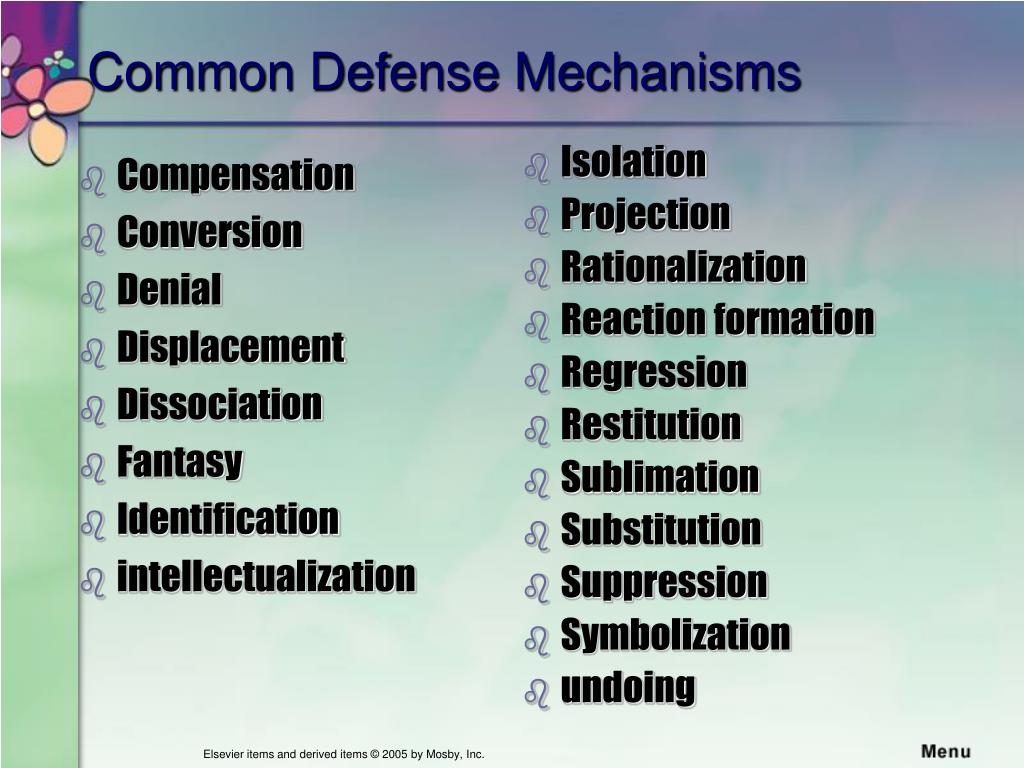 org/explanations/behaviors/coping/undoing.htm
org/explanations/behaviors/coping/undoing.htm
https://whatsyourgrief.com/defense-mechanisms-in-grief/
Newer Post Older Post Home
Magical Undoing - Psychological Defense Mechanism
Introduction
In this post we will focus on understanding the psychological defense mechanism of Magical Undoing, along with the steps therapists can take to help client move beyond this defense.
Magical Undoing: Examples
Instance 1: When the teacher asked me why I bunked class the other day, I crossed my fingers behind my back before lying so that God wouldn’t punish me.
Instance 2: “God forbid, if I fail—touch wood..”, says Maria touching a nearby wooden chair, “..then, I will go back to my hometown this time.”
Instance 3: My annoying elder brother, always so conscious about his height, yelled at me for crossing over his outstretched legs. “You’re blocking the way there, Shorty!” I snort.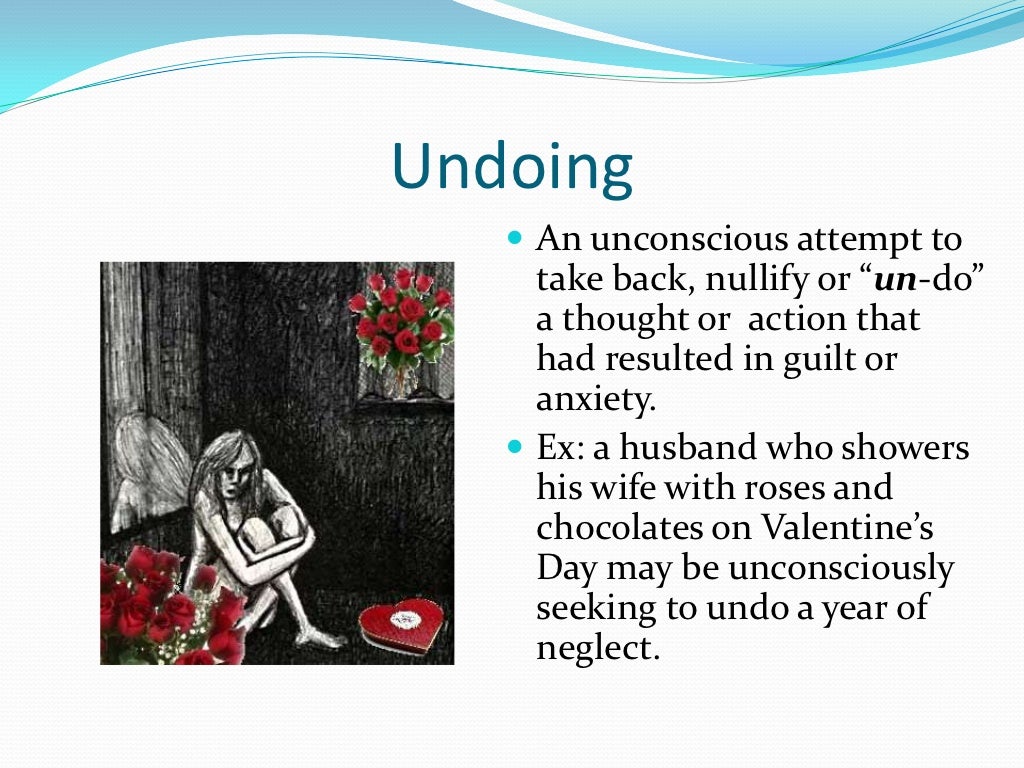 “I don’t care. You better cross over again, lest I might get stunted to this height of 5’8” forever!”
“I don’t care. You better cross over again, lest I might get stunted to this height of 5’8” forever!”
Each of these instances is no doubt smeared with superstitious beliefs.
What is interesting is that, not only are the beliefs superficial, but so are the actions used to avoid the consequences of supposedly “cursed” behaviour.
That is to say, no one really knows what God does to liars. Still, there is a popular belief that ‘naughty children’ are punished by the Almighty. To counter this undesirable consequence, kids usually cross their fingers behind the back, expecting this to undo the lying behaviour.
Does this action, in reality, reverse the lying motive in the first place?
Of course not!
It simply provides us with a false mental satisfaction that we haven’t done anything wrong for which we’re liable to face the brunt. Touching wood to avoid bad luck and crossing over someone’s feet twice to save them from turning into dwarfs are ideologies that work on similar lines.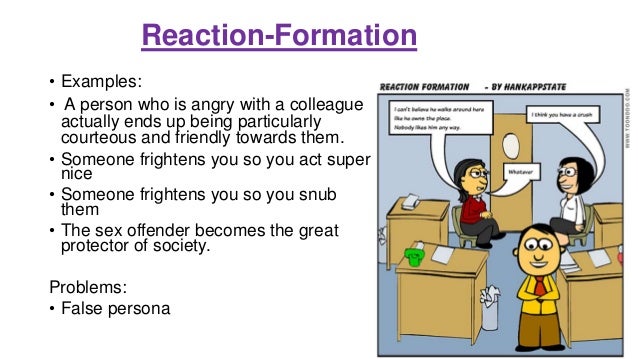
What is Magical Undoing?
Magical undoing is a combination of two defense mechanisms, namely, magical thinking and undoing.
Magical thinking
Magical thinking typically refers to a particular kind of collection of thoughts or rather a thinking pattern in itself whereby individuals believe that they/others have control over certain phenomena which can’t really be tamed by any human as such.
Thus, it is essentially impossible that you will stop growing in your height if a sibling jumps over your feet. No, your sibling doesn’t hold that power. Still, you imagine them to do. This is magical thinking.
Undoing
Undoing, as we have discussed earlier, refers to actions performed in response to certain previous actions in order to negate the latter. Thus, when Maria touches the wooden chair, she is attempting to go back on her negatively framed and possibly jinxed sentence of failing an exam.
The interesting thing to notice in case of magical undoing is that the two actions are not really related to one another.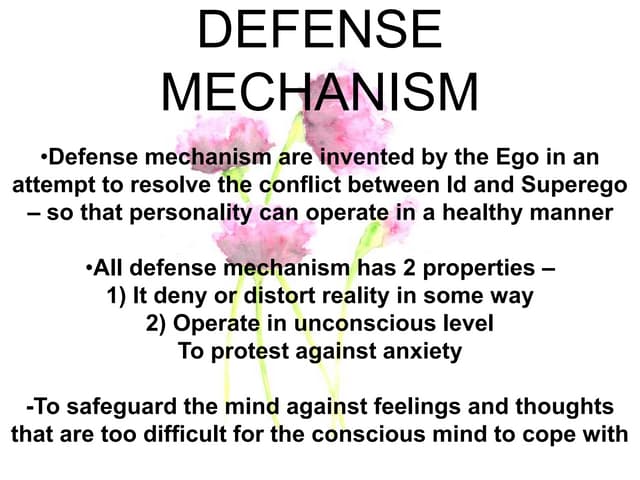 So, in Maria’s case the action of touching the wooden chair is totally unrelated to the action of failing. Logically speaking, how can touching a wooden chair stop Maria from failing?
So, in Maria’s case the action of touching the wooden chair is totally unrelated to the action of failing. Logically speaking, how can touching a wooden chair stop Maria from failing?
Magical Undoing in Religion
Examples of Magical undoing are also visible in certain religious or spiritual practices like confessions in a church or taking a bath in a holy river (E.g. Ganga).
Many people believe irrespective of what sins (crimes) they have committed, Confession to a Priest or taking a bath in river Ganga would help them cleanse themselves and that sins will be wiped out.
You can see traces of Magical undoing in these concepts, can’t you?
Usefulness of Magical Undoing
Important thing to remember is that like other defense mechanisms even Magical Undoing is useful in specific cases.
Take the example of a criminal who wants to start a fresh but is afraid of his past sins coming to bite him.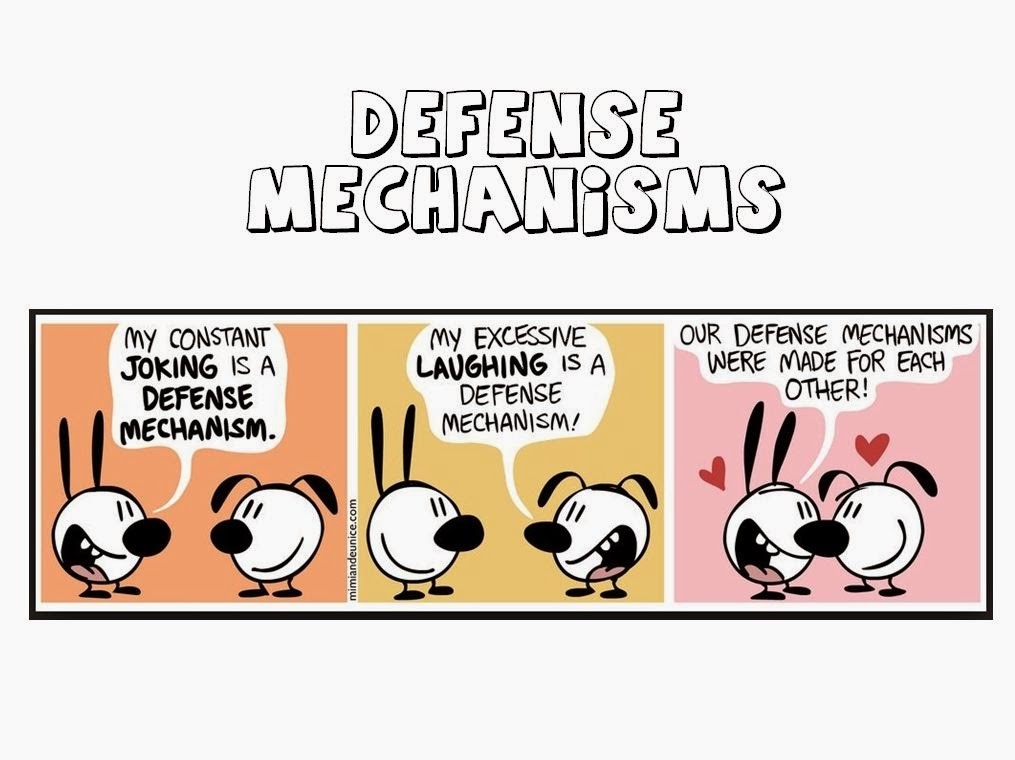 Wouldn’t the idea that Confession will help him wipe out his sins thereby allowing him to start a fresh, useful?
Wouldn’t the idea that Confession will help him wipe out his sins thereby allowing him to start a fresh, useful?
It is, isn’t it?
Problem with Magical Undoing
That said, the same defense can become a problem if the person continues with criminal activities thinking that once every year I can confess, wipe out my sins and start with criminal activities a fresh. Once I feel the sins have accumulated again, I can go offer another confession and the process can continue…. This is one of the reasons why many terrorists will also be very particular about their religious practices.
Another place where magical undoing can create problems because it can lead to compulsive behaviours which in the long run may lead to Obsessive Compulsive Disorder (OCD).
OCD is a type of anxiety disorder characterized by recurring unwanted thoughts, images or sensations (obsessions) followed by repeated engagement in unneeded actions (compulsions) to get rid of the anxiety aroused by the former.
The idea is that the compulsive behavior will help in dealing with the obsession or at least the anxiety aroused by the same.
Therapists Niche: Working with Magical Undoing
To understand what therapists can do to help a client using Magical Undoing as a defense, let us begin by understanding when is this defense used. Generally, people use magical undoing to deal with anxiety in two scenarios:
- When they have made mistakes in the past but would like to start a fresh.
- When they do not have the skills to deal with a situation that induces fear or guilt in them.
Therapists in each of these cases should help the clients:
- Get into the right mental state by helping them let go of:
- The emotional burden associated with the past mistakes
- The guilt / fear which is stored in the clients system as a result of the situation.
- Develop the required skills to:
- Not make the past mistakes again and start a fresh.
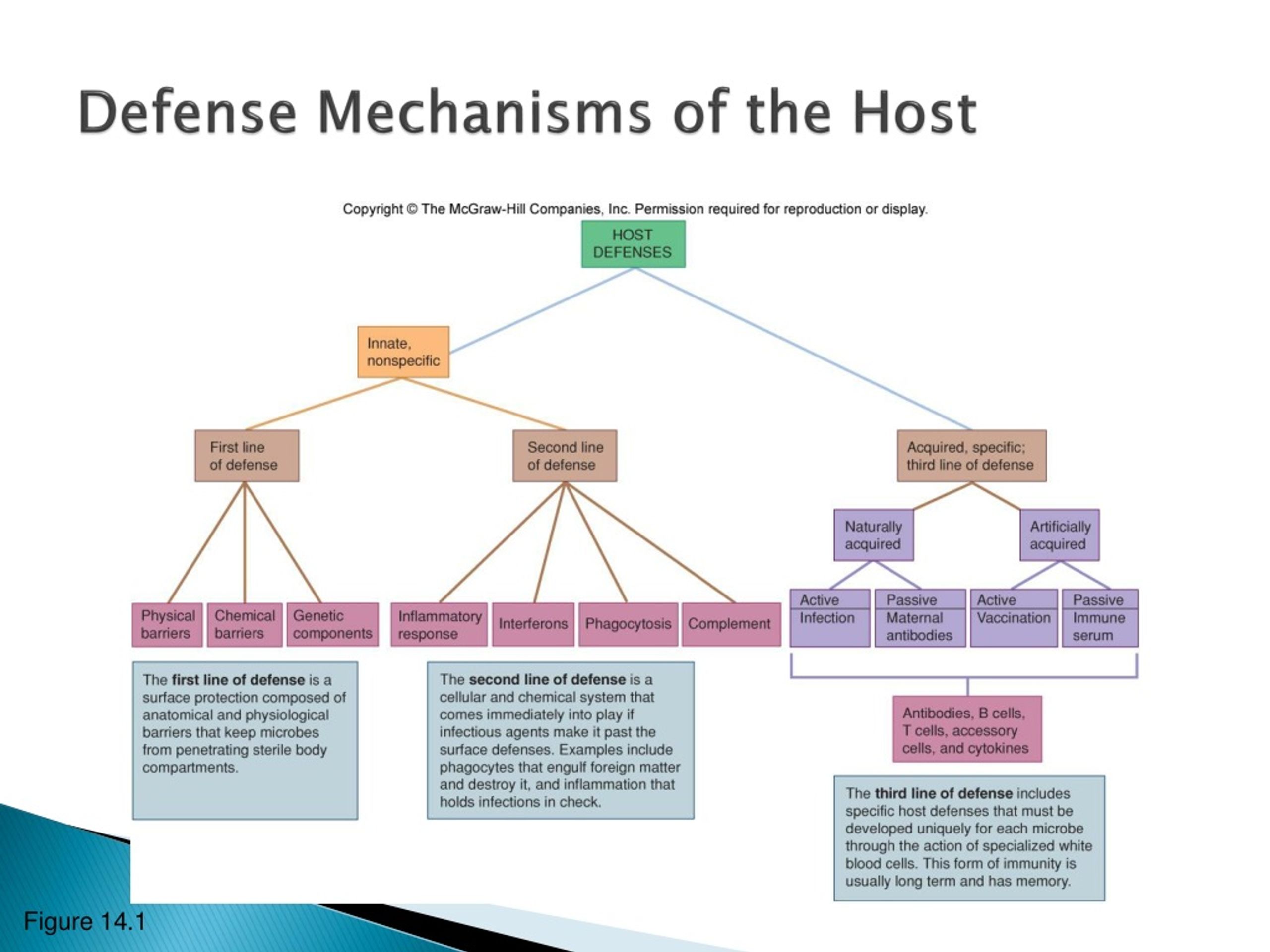
- Help them deal with the fear or guilt inducing situation more effectively with the help of an alternative strategy / strategies.
- Not make the past mistakes again and start a fresh.
Different techniques that therapists can use to help the clients
- Help the clients explore their emotions and past experiences with the help of the NLP meta model and corrective therapy
- Help the clients let go of old stored guilt or fear by using techniques like the hypnotic version of ho’oponopono, inner child therapy, regression therapy and other cathartic processes from Psycho-analysis.
- Help the client get insights from their past experiences with the help of revelation and introspection metaphors.
- Help the clients identify the required skills with the help of Meta model questions and the SOFT SEA™ framework.
- Help the client get into the right mental state with the help of techniques like anchoring, If-then statements, SWISH….
All these techniques and a lot more are covered in our Cognitive Hypnotic Psychotherapy™ Program.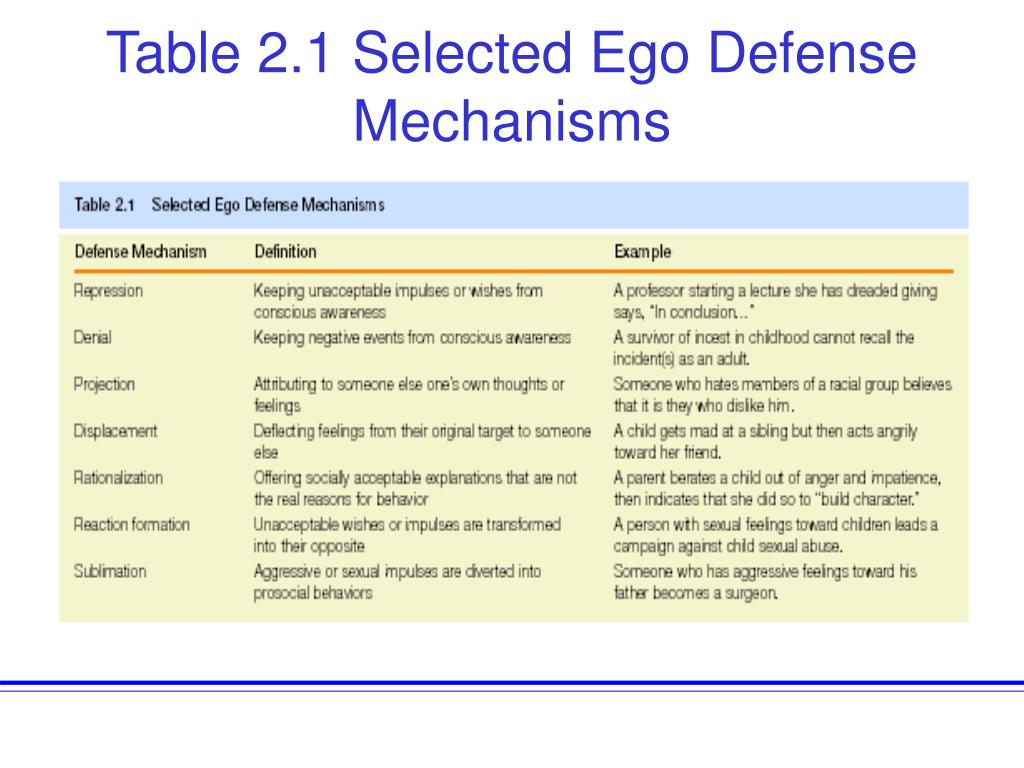 If you are a psychologist who would like to develop advanced therapeutic skills based on an eclectic approach to therapy, then you must check out the course curriculum. I am sure you would love the same.
If you are a psychologist who would like to develop advanced therapeutic skills based on an eclectic approach to therapy, then you must check out the course curriculum. I am sure you would love the same.
Psychological defense mechanisms as a way to resolve intrapersonal conflict in pedagogical activity
%PDF-1.7 % 10 obj > /Metadata 4 0 R /ViewerPreferences 5 0 R >> endobj 6 0 obj /Title >> endobj 20 obj > endobj 3 0 obj > endobj 40 obj > stream
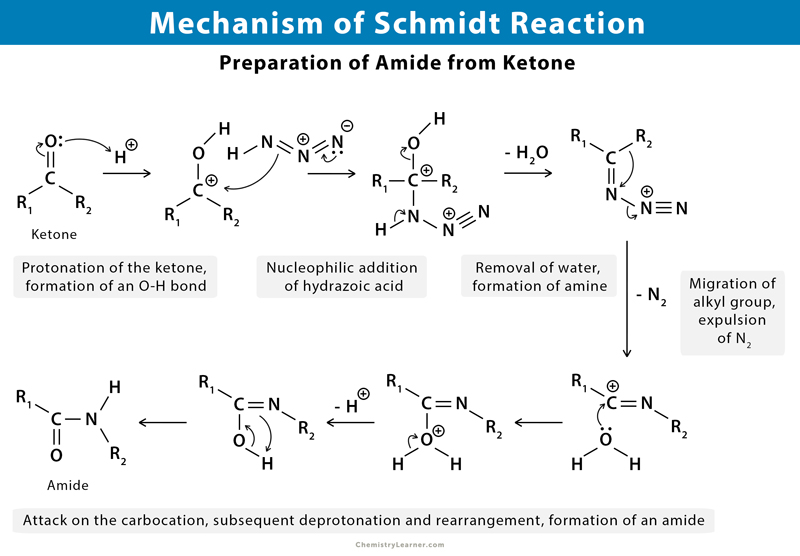 32 841.92] /Contents[81 0 R 82 0 R 83 0 R] /group> /Tabs /S /StructParents 0 /Annots [84 0 R] >> endobj 80 obj > /ExtGState> /ProcSet [/PDF /Text /ImageB /ImageC /ImageI] >> /MediaBox [0 0 595.32 841.92] /Contents 85 0 R /group> /Tabs /S /StructParents 1 >> endobj 9 0 obj > /ExtGState> /ProcSet [/PDF /Text /ImageB /ImageC /ImageI] >> /MediaBox [0 0 595.32 841.92] /Contents 88 0 R /group> /Tabs /S /StructParents 2 >> endobj 10 0 obj > /ExtGState> /ProcSet [/PDF /Text /ImageB /ImageC /ImageI] >> /MediaBox[0 0 595.32 841.92] /Contents 89 0 R /group> /Tabs /S /StructParents 3 >> endobj 11 0 obj > /ExtGState> /ProcSet [/PDF /Text /ImageB /ImageC /ImageI] >> /MediaBox [0 0 595.32 841.92] /Contents 90 0 R /group> /Tabs /S /StructParents 4 >> endobj 12 0 obj > /ExtGState> /ProcSet [/PDF /Text /ImageB /ImageC /ImageI] >> /MediaBox [0 0 595.32 841.92] /Contents 92 0 R /group> /Tabs /S /StructParents 5 >> endobj 13 0 obj > /ExtGState> /ProcSet [/PDF /Text /ImageB /ImageC /ImageI] >> /MediaBox[0 0 595.
32 841.92] /Contents[81 0 R 82 0 R 83 0 R] /group> /Tabs /S /StructParents 0 /Annots [84 0 R] >> endobj 80 obj > /ExtGState> /ProcSet [/PDF /Text /ImageB /ImageC /ImageI] >> /MediaBox [0 0 595.32 841.92] /Contents 85 0 R /group> /Tabs /S /StructParents 1 >> endobj 9 0 obj > /ExtGState> /ProcSet [/PDF /Text /ImageB /ImageC /ImageI] >> /MediaBox [0 0 595.32 841.92] /Contents 88 0 R /group> /Tabs /S /StructParents 2 >> endobj 10 0 obj > /ExtGState> /ProcSet [/PDF /Text /ImageB /ImageC /ImageI] >> /MediaBox[0 0 595.32 841.92] /Contents 89 0 R /group> /Tabs /S /StructParents 3 >> endobj 11 0 obj > /ExtGState> /ProcSet [/PDF /Text /ImageB /ImageC /ImageI] >> /MediaBox [0 0 595.32 841.92] /Contents 90 0 R /group> /Tabs /S /StructParents 4 >> endobj 12 0 obj > /ExtGState> /ProcSet [/PDF /Text /ImageB /ImageC /ImageI] >> /MediaBox [0 0 595.32 841.92] /Contents 92 0 R /group> /Tabs /S /StructParents 5 >> endobj 13 0 obj > /ExtGState> /ProcSet [/PDF /Text /ImageB /ImageC /ImageI] >> /MediaBox[0 0 595.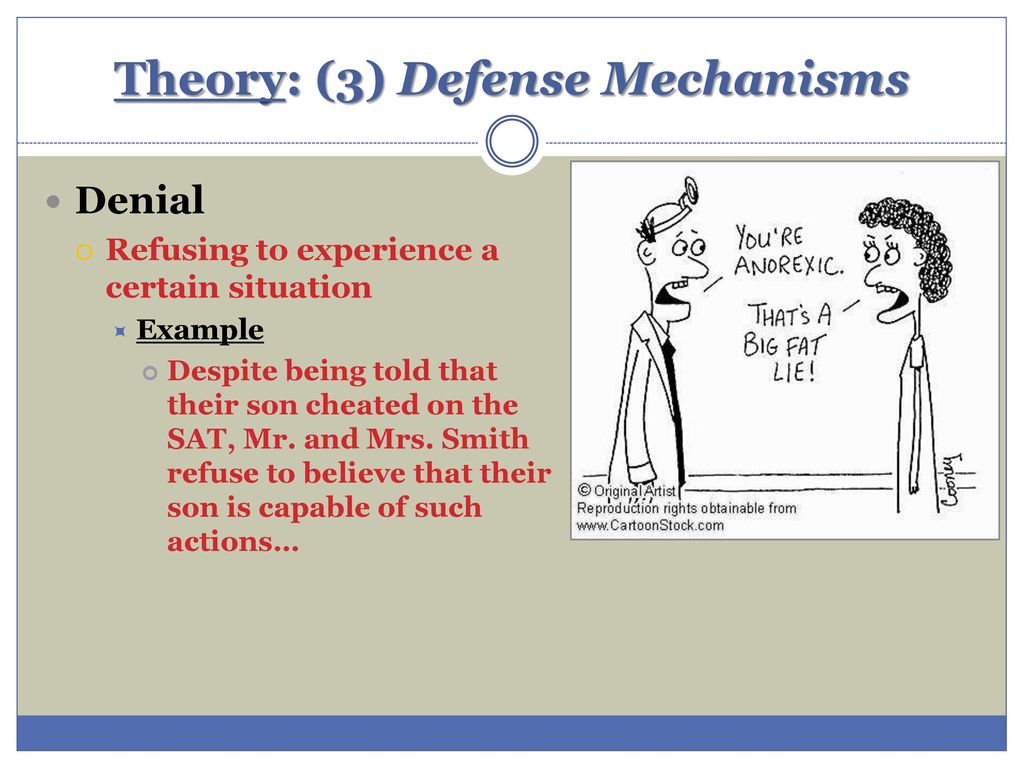 32 841.92] /Contents 93 0 R /group> /Tabs /S /StructParents 6 >> endobj 14 0 obj > /ExtGState> /ProcSet [/PDF /Text /ImageB /ImageC /ImageI] >> /MediaBox [0 0 595.32 841.92] /Contents 94 0 R /group> /Tabs /S /StructParents 7 >> endobj 15 0 obj > /ExtGState> /ProcSet [/PDF /Text /ImageB /ImageC /ImageI] >> /MediaBox [0 0 595.32 841.92] /Contents 95 0R /group> /Tabs /S /StructParents 8 >> endobj 16 0 obj > /ExtGState> /ProcSet [/PDF /Text /ImageB /ImageC /ImageI] >> /MediaBox[0 0 595.32 841.92] /Contents 96 0R /group> /Tabs /S /StructParents 9 >> endobj 17 0 obj > /ExtGState> /ProcSet [/PDF /Text /ImageB /ImageC /ImageI] >> /MediaBox [0 0 595.32 841.92] /Contents 97 0 R /group> /Tabs /S /StructParents 10 >> endobj 18 0 obj > /ExtGState> /ProcSet [/PDF /Text /ImageB /ImageC /ImageI] >> /MediaBox [0 0 595.32 841.92] /Contents 99 0R /group> /Tabs /S /StructParents 11 >> endobj 19 0 obj > /ExtGState> /ProcSet [/PDF /Text /ImageB /ImageC /ImageI] >> /MediaBox[0 0 595.32 841.92] /Contents 100 0R /group> /Tabs /S /StructParents 12 >> endobj 20 0 obj > /ExtGState> /ProcSet [/PDF /Text /ImageB /ImageC /ImageI] >> /MediaBox [0 0 595.
32 841.92] /Contents 93 0 R /group> /Tabs /S /StructParents 6 >> endobj 14 0 obj > /ExtGState> /ProcSet [/PDF /Text /ImageB /ImageC /ImageI] >> /MediaBox [0 0 595.32 841.92] /Contents 94 0 R /group> /Tabs /S /StructParents 7 >> endobj 15 0 obj > /ExtGState> /ProcSet [/PDF /Text /ImageB /ImageC /ImageI] >> /MediaBox [0 0 595.32 841.92] /Contents 95 0R /group> /Tabs /S /StructParents 8 >> endobj 16 0 obj > /ExtGState> /ProcSet [/PDF /Text /ImageB /ImageC /ImageI] >> /MediaBox[0 0 595.32 841.92] /Contents 96 0R /group> /Tabs /S /StructParents 9 >> endobj 17 0 obj > /ExtGState> /ProcSet [/PDF /Text /ImageB /ImageC /ImageI] >> /MediaBox [0 0 595.32 841.92] /Contents 97 0 R /group> /Tabs /S /StructParents 10 >> endobj 18 0 obj > /ExtGState> /ProcSet [/PDF /Text /ImageB /ImageC /ImageI] >> /MediaBox [0 0 595.32 841.92] /Contents 99 0R /group> /Tabs /S /StructParents 11 >> endobj 19 0 obj > /ExtGState> /ProcSet [/PDF /Text /ImageB /ImageC /ImageI] >> /MediaBox[0 0 595.32 841.92] /Contents 100 0R /group> /Tabs /S /StructParents 12 >> endobj 20 0 obj > /ExtGState> /ProcSet [/PDF /Text /ImageB /ImageC /ImageI] >> /MediaBox [0 0 595.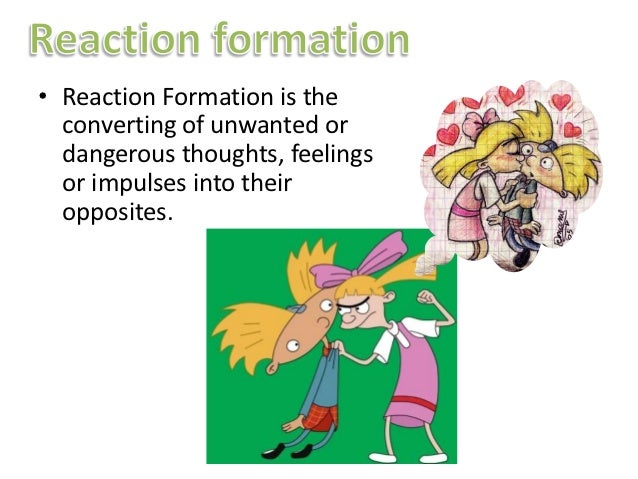 32 841.92] /Contents 102 0 R /group> /Tabs /S /StructParents 13 >> endobj 21 0 obj > /ExtGState> /ProcSet [/PDF /Text /ImageB /ImageC /ImageI] >> /MediaBox [0 0 595.32 841.92] /Contents 103 0 R /group> /Tabs /S /StructParents 14 >> endobj 22 0 obj > /ExtGState> /ProcSet [/PDF /Text /ImageB /ImageC /ImageI] >> /MediaBox[0 0 595.32 841.92] /Contents 104 0 R /group> /Tabs /S /StructParents 15 >> endobj 23 0 obj > /ExtGState> /ProcSet [/PDF /Text /ImageB /ImageC /ImageI] >> /MediaBox [0 0 595.32 841.92] /Contents 105 0 R /group> /Tabs /S /StructParents 16 >> endobj 24 0 obj > /ExtGState> /ProcSet [/PDF /Text /ImageB /ImageC /ImageI] >> /MediaBox [0 0 595.32 841.92] /Contents 106 0 R /group> /Tabs /S /StructParents 17 >> endobj 25 0 obj > /ExtGState> /ProcSet [/PDF /Text /ImageB /ImageC /ImageI] >> /MediaBox[0 0 595.32 841.92] /Contents 107 0 R /group> /Tabs /S /StructParents 18 >> endobj 26 0 obj > /ExtGState> /ProcSet [/PDF /Text /ImageB /ImageC /ImageI] >> /MediaBox [0 0 595.32 841.92] /Contents 108 0 R /group> /Tabs /S /StructParents 19 >> endobj 27 0 obj > /ExtGState> /ProcSet [/PDF /Text /ImageB /ImageC /ImageI] >> /MediaBox [0 0 595.
32 841.92] /Contents 102 0 R /group> /Tabs /S /StructParents 13 >> endobj 21 0 obj > /ExtGState> /ProcSet [/PDF /Text /ImageB /ImageC /ImageI] >> /MediaBox [0 0 595.32 841.92] /Contents 103 0 R /group> /Tabs /S /StructParents 14 >> endobj 22 0 obj > /ExtGState> /ProcSet [/PDF /Text /ImageB /ImageC /ImageI] >> /MediaBox[0 0 595.32 841.92] /Contents 104 0 R /group> /Tabs /S /StructParents 15 >> endobj 23 0 obj > /ExtGState> /ProcSet [/PDF /Text /ImageB /ImageC /ImageI] >> /MediaBox [0 0 595.32 841.92] /Contents 105 0 R /group> /Tabs /S /StructParents 16 >> endobj 24 0 obj > /ExtGState> /ProcSet [/PDF /Text /ImageB /ImageC /ImageI] >> /MediaBox [0 0 595.32 841.92] /Contents 106 0 R /group> /Tabs /S /StructParents 17 >> endobj 25 0 obj > /ExtGState> /ProcSet [/PDF /Text /ImageB /ImageC /ImageI] >> /MediaBox[0 0 595.32 841.92] /Contents 107 0 R /group> /Tabs /S /StructParents 18 >> endobj 26 0 obj > /ExtGState> /ProcSet [/PDF /Text /ImageB /ImageC /ImageI] >> /MediaBox [0 0 595.32 841.92] /Contents 108 0 R /group> /Tabs /S /StructParents 19 >> endobj 27 0 obj > /ExtGState> /ProcSet [/PDF /Text /ImageB /ImageC /ImageI] >> /MediaBox [0 0 595.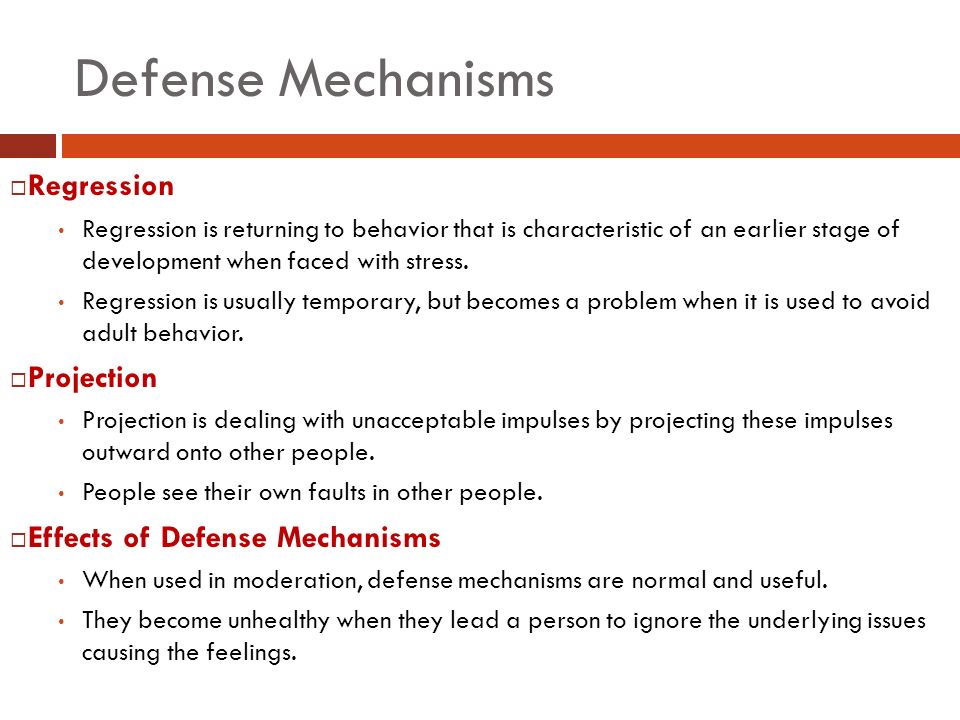 32 841.92] /Contents 109 0 R /group> /Tabs /S /StructParents 20 >> endobj 28 0 obj > /ExtGState> /ProcSet [/PDF /Text /ImageB /ImageC /ImageI] >> /MediaBox[0 0 595.32 841.92] /Contents 110 0 R /group> /Tabs /S /StructParents 21 >> endobj 29 0 obj > /ExtGState> /ProcSet [/PDF /Text /ImageB /ImageC /ImageI] >> /MediaBox [0 0 595.32 841.92] /Contents 111 0 R /group> /Tabs /S /StructParents 22 >> endobj 30 0 obj > /ExtGState> /ProcSet [/PDF /Text /ImageB /ImageC /ImageI] >> /MediaBox [0 0 595.32 841.92] /Contents 112 0 R /group> /Tabs /S /StructParents 23 >> endobj 31 0 obj > /ExtGState> /ProcSet [/PDF /Text /ImageB /ImageC /ImageI] >> /MediaBox[0 0 595.32 841.92] /Contents 113 0R /group> /Tabs /S /StructParents 24 >> endobj 32 0 obj > /ExtGState> /ProcSet [/PDF /Text /ImageB /ImageC /ImageI] >> /MediaBox [0 0 595.32 841.92] /Contents 114 0R /group> /Tabs /S /StructParents 25 >> endobj 33 0 obj > /ExtGState> /ProcSet [/PDF /Text /ImageB /ImageC /ImageI] >> /MediaBox [0 0 595.32 841.92] /Contents 116 0 R /group> /Tabs /S /StructParents 26 >> endobj 34 0 obj > /ExtGState> /ProcSet [/PDF /Text /ImageB /ImageC /ImageI] >> /MediaBox[0 0 595.
32 841.92] /Contents 109 0 R /group> /Tabs /S /StructParents 20 >> endobj 28 0 obj > /ExtGState> /ProcSet [/PDF /Text /ImageB /ImageC /ImageI] >> /MediaBox[0 0 595.32 841.92] /Contents 110 0 R /group> /Tabs /S /StructParents 21 >> endobj 29 0 obj > /ExtGState> /ProcSet [/PDF /Text /ImageB /ImageC /ImageI] >> /MediaBox [0 0 595.32 841.92] /Contents 111 0 R /group> /Tabs /S /StructParents 22 >> endobj 30 0 obj > /ExtGState> /ProcSet [/PDF /Text /ImageB /ImageC /ImageI] >> /MediaBox [0 0 595.32 841.92] /Contents 112 0 R /group> /Tabs /S /StructParents 23 >> endobj 31 0 obj > /ExtGState> /ProcSet [/PDF /Text /ImageB /ImageC /ImageI] >> /MediaBox[0 0 595.32 841.92] /Contents 113 0R /group> /Tabs /S /StructParents 24 >> endobj 32 0 obj > /ExtGState> /ProcSet [/PDF /Text /ImageB /ImageC /ImageI] >> /MediaBox [0 0 595.32 841.92] /Contents 114 0R /group> /Tabs /S /StructParents 25 >> endobj 33 0 obj > /ExtGState> /ProcSet [/PDF /Text /ImageB /ImageC /ImageI] >> /MediaBox [0 0 595.32 841.92] /Contents 116 0 R /group> /Tabs /S /StructParents 26 >> endobj 34 0 obj > /ExtGState> /ProcSet [/PDF /Text /ImageB /ImageC /ImageI] >> /MediaBox[0 0 595. 32 841.92] /Contents 117 0 R /group> /Tabs /S /StructParents 27 >> endobj 35 0 obj > /ExtGState> /ProcSet [/PDF /Text /ImageB /ImageC /ImageI] >> /MediaBox [0 0 595.32 841.92] /Contents 118 0R /group> /Tabs /S /StructParents 28 >> endobj 36 0 obj > /ExtGState> /XObject> /ProcSet [/PDF /Text /ImageB /ImageC /ImageI] >> /MediaBox [0 0 595.32 841.92] /Contents 121 0R /group> /Tabs /S /StructParents 29 >> endobj 37 0 obj > /Font> /ProcSet [/PDF /Text /ImageB /ImageC /ImageI] >> /MediaBox[0 0 595.32 841.92] /Contents 122 0 R /group> /Tabs /S /StructParents 30 >> endobj 38 0 obj > /ExtGState> /XObject> /ProcSet [/PDF /Text /ImageB /ImageC /ImageI] >> /MediaBox [0 0 595.32 841.92] /Contents 124 0 R /group> /Tabs /S /StructParents 31 >> endobj 39 0 obj > /ExtGState> /Font> /ProcSet [/PDF /Text /ImageB /ImageC /ImageI] >> /MediaBox [0 0 595.32 841.92] /Contents 127 0 R /group> /Tabs /S /StructParents 32 >> endobj 40 0 obj > /ExtGState> /Font> /ProcSet [/PDF /Text /ImageB /ImageC /ImageI] >> /MediaBox[0 0 595.
32 841.92] /Contents 117 0 R /group> /Tabs /S /StructParents 27 >> endobj 35 0 obj > /ExtGState> /ProcSet [/PDF /Text /ImageB /ImageC /ImageI] >> /MediaBox [0 0 595.32 841.92] /Contents 118 0R /group> /Tabs /S /StructParents 28 >> endobj 36 0 obj > /ExtGState> /XObject> /ProcSet [/PDF /Text /ImageB /ImageC /ImageI] >> /MediaBox [0 0 595.32 841.92] /Contents 121 0R /group> /Tabs /S /StructParents 29 >> endobj 37 0 obj > /Font> /ProcSet [/PDF /Text /ImageB /ImageC /ImageI] >> /MediaBox[0 0 595.32 841.92] /Contents 122 0 R /group> /Tabs /S /StructParents 30 >> endobj 38 0 obj > /ExtGState> /XObject> /ProcSet [/PDF /Text /ImageB /ImageC /ImageI] >> /MediaBox [0 0 595.32 841.92] /Contents 124 0 R /group> /Tabs /S /StructParents 31 >> endobj 39 0 obj > /ExtGState> /Font> /ProcSet [/PDF /Text /ImageB /ImageC /ImageI] >> /MediaBox [0 0 595.32 841.92] /Contents 127 0 R /group> /Tabs /S /StructParents 32 >> endobj 40 0 obj > /ExtGState> /Font> /ProcSet [/PDF /Text /ImageB /ImageC /ImageI] >> /MediaBox[0 0 595.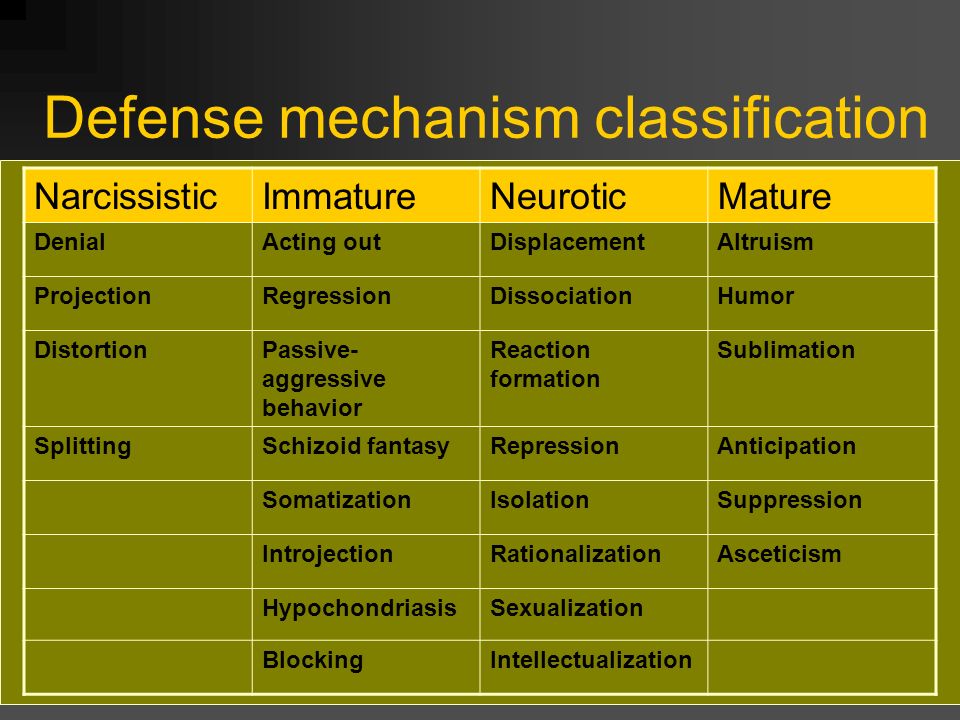 32 841.92] /Contents 129 0 R /group> /Tabs /S /StructParents 33 >> endobj 41 0 obj > /ExtGState> /Font> /ProcSet [/PDF /Text /ImageB /ImageC /ImageI] >> /MediaBox [0 0 595.32 841.92] /Contents 131 0 R /group> /Tabs /S /StructParents 34 >> endobj 42 0 obj > /ExtGState> /ProcSet [/PDF /Text /ImageB /ImageC /ImageI] >> /MediaBox [0 0 595.32 841.92] /Contents 132 0R /group> /Tabs /S /StructParents 35 >> endobj 43 0 obj > /Font> /ProcSet [/PDF /Text /ImageB /ImageC /ImageI] >> /MediaBox[0 0 595.32 841.92] /Contents 133 0 R /group> /Tabs /S /StructParents 36 >> endobj 44 0 obj > /Font> /ProcSet [/PDF /Text /ImageB /ImageC /ImageI] >> /MediaBox [0 0 595.32 841.92] /Contents 136 0 R /group> /Tabs /S /StructParents 37 >> endobj 45 0 obj > /ExtGState> /ProcSet [/PDF /Text /ImageB /ImageC /ImageI] >> /MediaBox [0 0 595.32 841.92] /Contents 137 0R /group> /Tabs /S /StructParents 38 >> endobj 46 0 obj > /ExtGState> /ProcSet [/PDF /Text /ImageB /ImageC /ImageI] >> /MediaBox[0 0 595.32 841.92] /Contents 138 0R /group> /Tabs /S /StructParents 39 >> endobj 47 0 obj > /ExtGState> /ProcSet [/PDF /Text /ImageB /ImageC /ImageI] >> /MediaBox [0 0 595.
32 841.92] /Contents 129 0 R /group> /Tabs /S /StructParents 33 >> endobj 41 0 obj > /ExtGState> /Font> /ProcSet [/PDF /Text /ImageB /ImageC /ImageI] >> /MediaBox [0 0 595.32 841.92] /Contents 131 0 R /group> /Tabs /S /StructParents 34 >> endobj 42 0 obj > /ExtGState> /ProcSet [/PDF /Text /ImageB /ImageC /ImageI] >> /MediaBox [0 0 595.32 841.92] /Contents 132 0R /group> /Tabs /S /StructParents 35 >> endobj 43 0 obj > /Font> /ProcSet [/PDF /Text /ImageB /ImageC /ImageI] >> /MediaBox[0 0 595.32 841.92] /Contents 133 0 R /group> /Tabs /S /StructParents 36 >> endobj 44 0 obj > /Font> /ProcSet [/PDF /Text /ImageB /ImageC /ImageI] >> /MediaBox [0 0 595.32 841.92] /Contents 136 0 R /group> /Tabs /S /StructParents 37 >> endobj 45 0 obj > /ExtGState> /ProcSet [/PDF /Text /ImageB /ImageC /ImageI] >> /MediaBox [0 0 595.32 841.92] /Contents 137 0R /group> /Tabs /S /StructParents 38 >> endobj 46 0 obj > /ExtGState> /ProcSet [/PDF /Text /ImageB /ImageC /ImageI] >> /MediaBox[0 0 595.32 841.92] /Contents 138 0R /group> /Tabs /S /StructParents 39 >> endobj 47 0 obj > /ExtGState> /ProcSet [/PDF /Text /ImageB /ImageC /ImageI] >> /MediaBox [0 0 595.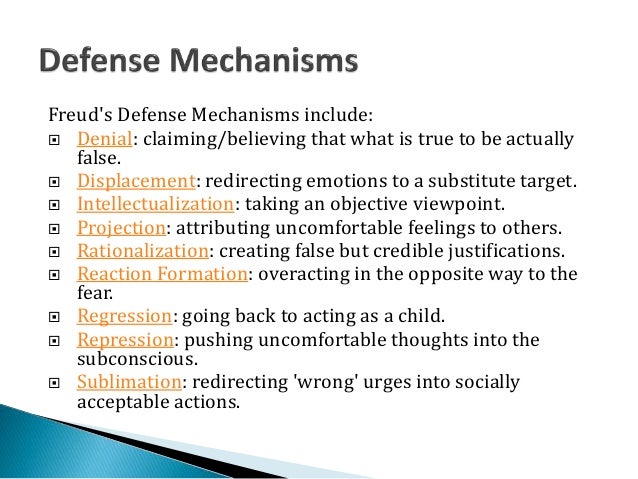 32 841.92] /Contents 139 0 R /group> /Tabs /S /StructParents 40 >> endobj 48 0 obj > /Font> /ProcSet [/PDF /Text /ImageB /ImageC /ImageI] >> /MediaBox [0 0 595.32 841.92] /Contents 140 0 R /group> /Tabs /S /StructParents 41 >> endobj 49 0 obj > /Font> /ProcSet [/PDF /Text /ImageB /ImageC /ImageI] >> /MediaBox[0 0 595.32 841.92] /Contents 141 0 R /group> /Tabs /S /StructParents 42 >> endobj 50 0 obj > /Font> /ProcSet [/PDF /Text /ImageB /ImageC /ImageI] >> /MediaBox [0 0 595.32 841.92] /Contents 142 0 R /group> /Tabs /S /StructParents 44 >> endobj 51 0 obj > /Font> /ProcSet [/PDF /Text /ImageB /ImageC /ImageI] >> /MediaBox [0 0 595.32 841.92] /Contents 143 0 R /group> /Tabs /S /StructParents 45 >> endobj 52 0 obj > /Font> /ProcSet [/PDF /Text /ImageB /ImageC /ImageI] >> /MediaBox[0 0 595.32 841.92] /Contents 145 0 R /group> /Tabs /S /StructParents 43 >> endobj 53 0 obj > /ExtGState> /ProcSet [/PDF /Text /ImageB /ImageC /ImageI] >> /MediaBox [0 0 595.32 841.92] /Contents 146 0 R /group> /Tabs /S /StructParents 46 >> endobj 54 0 obj > /Font> /ProcSet [/PDF /Text /ImageB /ImageC /ImageI] >> /MediaBox [0 0 595.
32 841.92] /Contents 139 0 R /group> /Tabs /S /StructParents 40 >> endobj 48 0 obj > /Font> /ProcSet [/PDF /Text /ImageB /ImageC /ImageI] >> /MediaBox [0 0 595.32 841.92] /Contents 140 0 R /group> /Tabs /S /StructParents 41 >> endobj 49 0 obj > /Font> /ProcSet [/PDF /Text /ImageB /ImageC /ImageI] >> /MediaBox[0 0 595.32 841.92] /Contents 141 0 R /group> /Tabs /S /StructParents 42 >> endobj 50 0 obj > /Font> /ProcSet [/PDF /Text /ImageB /ImageC /ImageI] >> /MediaBox [0 0 595.32 841.92] /Contents 142 0 R /group> /Tabs /S /StructParents 44 >> endobj 51 0 obj > /Font> /ProcSet [/PDF /Text /ImageB /ImageC /ImageI] >> /MediaBox [0 0 595.32 841.92] /Contents 143 0 R /group> /Tabs /S /StructParents 45 >> endobj 52 0 obj > /Font> /ProcSet [/PDF /Text /ImageB /ImageC /ImageI] >> /MediaBox[0 0 595.32 841.92] /Contents 145 0 R /group> /Tabs /S /StructParents 43 >> endobj 53 0 obj > /ExtGState> /ProcSet [/PDF /Text /ImageB /ImageC /ImageI] >> /MediaBox [0 0 595.32 841.92] /Contents 146 0 R /group> /Tabs /S /StructParents 46 >> endobj 54 0 obj > /Font> /ProcSet [/PDF /Text /ImageB /ImageC /ImageI] >> /MediaBox [0 0 595.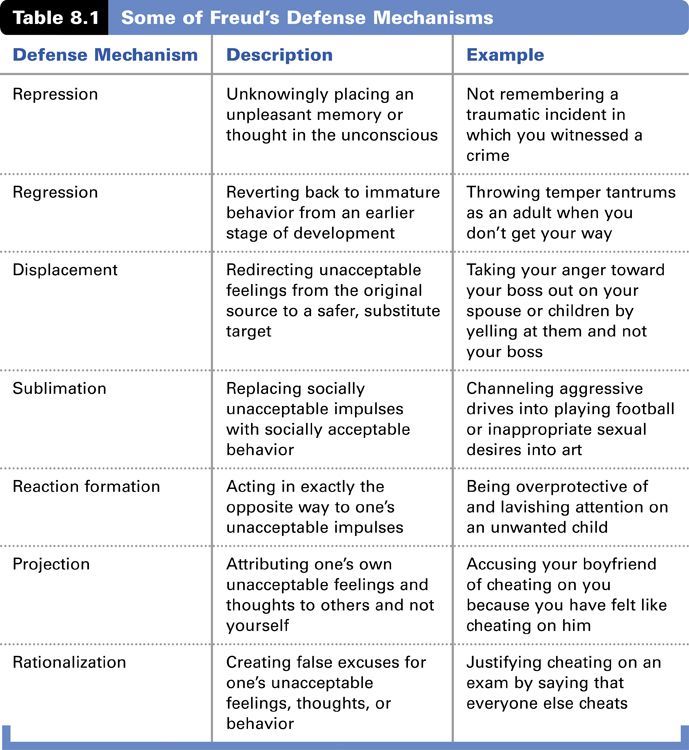 32 841.92] /Contents 147 0 R /group> /Tabs /S /StructParents 47 >> endobj 55 0 obj > /Font> /ProcSet [/PDF /Text /ImageB /ImageC /ImageI] >> /MediaBox[0 0 595.32 841.92] /Contents 148 0 R /group> /Tabs /S /StructParents 48 >> endobj 56 0 obj > /Font> /ProcSet [/PDF /Text /ImageB /ImageC /ImageI] >> /MediaBox [0 0 595.32 841.92] /Contents 149 0R /group> /Tabs /S /StructParents 49 >> endobj 57 0 obj > /ExtGState> /ProcSet [/PDF /Text /ImageB /ImageC /ImageI] >> /MediaBox [0 0 595.32 841.92] /Contents 150 0 R /group> /Tabs /S /StructParents 50 >> endobj 58 0 obj > /ExtGState> /ProcSet [/PDF /Text /ImageB /ImageC /ImageI] >> /MediaBox[0 0 595.32 841.92] /Contents 151 0 R /group> /Tabs /S /StructParents 51 >> endobj 59 0 obj > /ExtGState> /ProcSet [/PDF /Text /ImageB /ImageC /ImageI] >> /MediaBox [0 0 595.32 841.92] /Contents 152 0R /group> /Tabs /S /StructParents 52 >> endobj 60 0 obj > /Font> /ProcSet [/PDF /Text /ImageB /ImageC /ImageI] >> /MediaBox [0 0 595.32 841.92] /Contents 153 0R /group> /Tabs /S /StructParents 53 >> endobj 61 0 obj > /ExtGState> /XObject> /ProcSet [/PDF /Text /ImageB /ImageC /ImageI] >> /MediaBox[0 0 595.
32 841.92] /Contents 147 0 R /group> /Tabs /S /StructParents 47 >> endobj 55 0 obj > /Font> /ProcSet [/PDF /Text /ImageB /ImageC /ImageI] >> /MediaBox[0 0 595.32 841.92] /Contents 148 0 R /group> /Tabs /S /StructParents 48 >> endobj 56 0 obj > /Font> /ProcSet [/PDF /Text /ImageB /ImageC /ImageI] >> /MediaBox [0 0 595.32 841.92] /Contents 149 0R /group> /Tabs /S /StructParents 49 >> endobj 57 0 obj > /ExtGState> /ProcSet [/PDF /Text /ImageB /ImageC /ImageI] >> /MediaBox [0 0 595.32 841.92] /Contents 150 0 R /group> /Tabs /S /StructParents 50 >> endobj 58 0 obj > /ExtGState> /ProcSet [/PDF /Text /ImageB /ImageC /ImageI] >> /MediaBox[0 0 595.32 841.92] /Contents 151 0 R /group> /Tabs /S /StructParents 51 >> endobj 59 0 obj > /ExtGState> /ProcSet [/PDF /Text /ImageB /ImageC /ImageI] >> /MediaBox [0 0 595.32 841.92] /Contents 152 0R /group> /Tabs /S /StructParents 52 >> endobj 60 0 obj > /Font> /ProcSet [/PDF /Text /ImageB /ImageC /ImageI] >> /MediaBox [0 0 595.32 841.92] /Contents 153 0R /group> /Tabs /S /StructParents 53 >> endobj 61 0 obj > /ExtGState> /XObject> /ProcSet [/PDF /Text /ImageB /ImageC /ImageI] >> /MediaBox[0 0 595.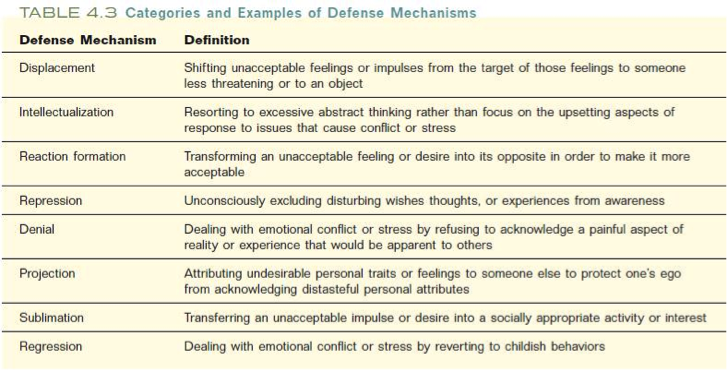 32 841.92] /Contents 155 0R /group> /Tabs /S /StructParents 54 >> endobj 62 0 obj > /ExtGState> /XObject> /ProcSet [/PDF /Text /ImageB /ImageC /ImageI] >> /MediaBox [0 0 595.32 841.92] /Contents 157 0 R /group> /Tabs /S /StructParents 55 >> endobj 63 0 obj > /ExtGState> /ProcSet [/PDF /Text /ImageB /ImageC /ImageI] >> /MediaBox [0 0 595.32 841.92] /Contents 158 0 R /group> /Tabs /S /StructParents 56 >> endobj 64 0 obj > /ExtGState> /ProcSet [/PDF /Text /ImageB /ImageC /ImageI] >> /MediaBox[0 0 595.32 841.92] /Contents 159 0R /group> /Tabs /S /StructParents 57 >> endobj 65 0 obj > /ExtGState> /ProcSet [/PDF /Text /ImageB /ImageC /ImageI] >> /MediaBox [0 0 595.32 841.92] /Contents 160 0 R /group> /Tabs /S /StructParents 58 >> endobj 66 0 obj > /Font> /ProcSet [/PDF /Text /ImageB /ImageC /ImageI] >> /MediaBox [0 0 595.32 841.92] /Contents 161 0R /group> /Tabs /S /StructParents 59 >> endobj 67 0 obj > /ExtGState> /ProcSet [/PDF /Text /ImageB /ImageC /ImageI] >> /MediaBox[0 0 595.32 841.92] /Contents 162 0 R /group> /Tabs /S /StructParents 60 >> endobj 68 0 obj > endobj 69 0 obj > endobj 70 0 obj > endobj 71 0 obj > endobj 72 0 obj > endobj 73 0 obj > endobj 74 0 obj > endobj 75 0 obj > endobj 76 0 obj > endobj 77 0 obj > endobj 78 0 obj > endobj 79 0 obj > endobj 80 0 obj > stream x
32 841.92] /Contents 155 0R /group> /Tabs /S /StructParents 54 >> endobj 62 0 obj > /ExtGState> /XObject> /ProcSet [/PDF /Text /ImageB /ImageC /ImageI] >> /MediaBox [0 0 595.32 841.92] /Contents 157 0 R /group> /Tabs /S /StructParents 55 >> endobj 63 0 obj > /ExtGState> /ProcSet [/PDF /Text /ImageB /ImageC /ImageI] >> /MediaBox [0 0 595.32 841.92] /Contents 158 0 R /group> /Tabs /S /StructParents 56 >> endobj 64 0 obj > /ExtGState> /ProcSet [/PDF /Text /ImageB /ImageC /ImageI] >> /MediaBox[0 0 595.32 841.92] /Contents 159 0R /group> /Tabs /S /StructParents 57 >> endobj 65 0 obj > /ExtGState> /ProcSet [/PDF /Text /ImageB /ImageC /ImageI] >> /MediaBox [0 0 595.32 841.92] /Contents 160 0 R /group> /Tabs /S /StructParents 58 >> endobj 66 0 obj > /Font> /ProcSet [/PDF /Text /ImageB /ImageC /ImageI] >> /MediaBox [0 0 595.32 841.92] /Contents 161 0R /group> /Tabs /S /StructParents 59 >> endobj 67 0 obj > /ExtGState> /ProcSet [/PDF /Text /ImageB /ImageC /ImageI] >> /MediaBox[0 0 595.32 841.92] /Contents 162 0 R /group> /Tabs /S /StructParents 60 >> endobj 68 0 obj > endobj 69 0 obj > endobj 70 0 obj > endobj 71 0 obj > endobj 72 0 obj > endobj 73 0 obj > endobj 74 0 obj > endobj 75 0 obj > endobj 76 0 obj > endobj 77 0 obj > endobj 78 0 obj > endobj 79 0 obj > endobj 80 0 obj > stream x 9 types of psychological defense that are important to realize in time / AdMe
The protective mechanisms of the human psyche are aimed at reducing negative and traumatic experiences and manifest themselves at the unconscious level.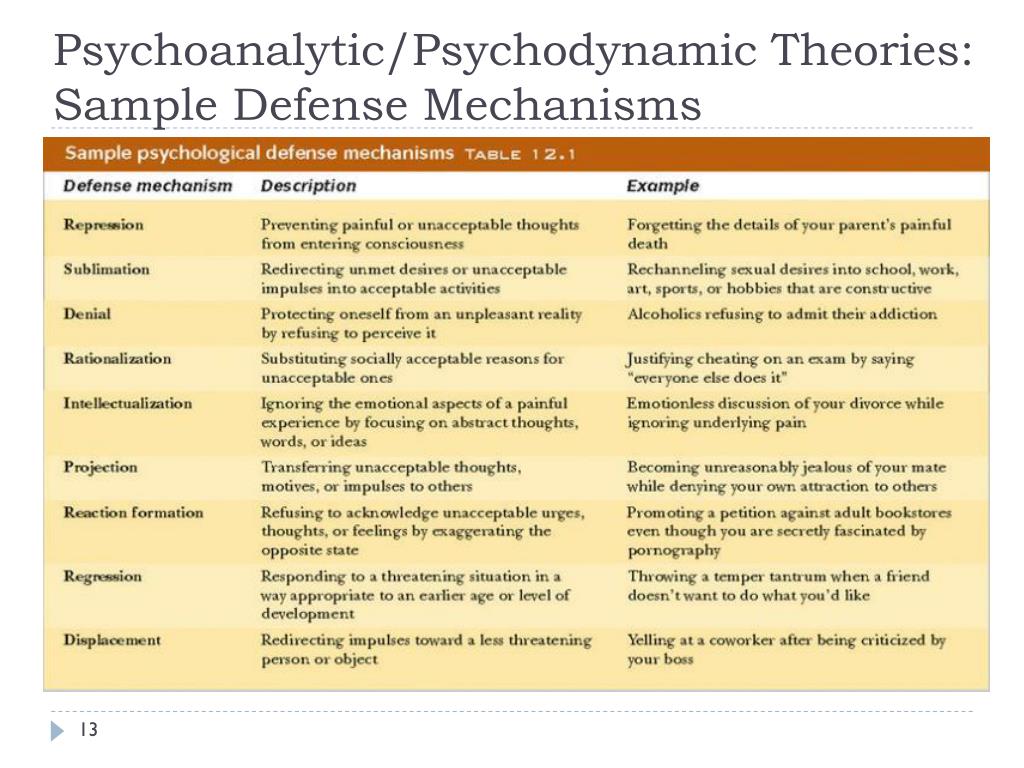 This term was introduced by Sigmund Freud , and then more deeply developed by his students and followers, most notably Anna Freud. Let's try to figure out when these mechanisms are useful, and in what cases they hinder our development and better respond and act consciously.
This term was introduced by Sigmund Freud , and then more deeply developed by his students and followers, most notably Anna Freud. Let's try to figure out when these mechanisms are useful, and in what cases they hinder our development and better respond and act consciously.
ADME will talk about the 9 main types of psychological protection that are important to realize in time. This is what the psychotherapist does most of the time in his office - helping the client to comprehend the defense mechanisms that limit his freedom, spontaneity of response, distort interaction with other people.
1. Repression
Repression is the elimination of unpleasant experiences from consciousness. It manifests itself in forgetting what causes psychological discomfort. Repression can be compared to a dam that can burst - there is always a risk that memories of unpleasant events will break out. And the psyche spends a huge amount of energy on suppressing them.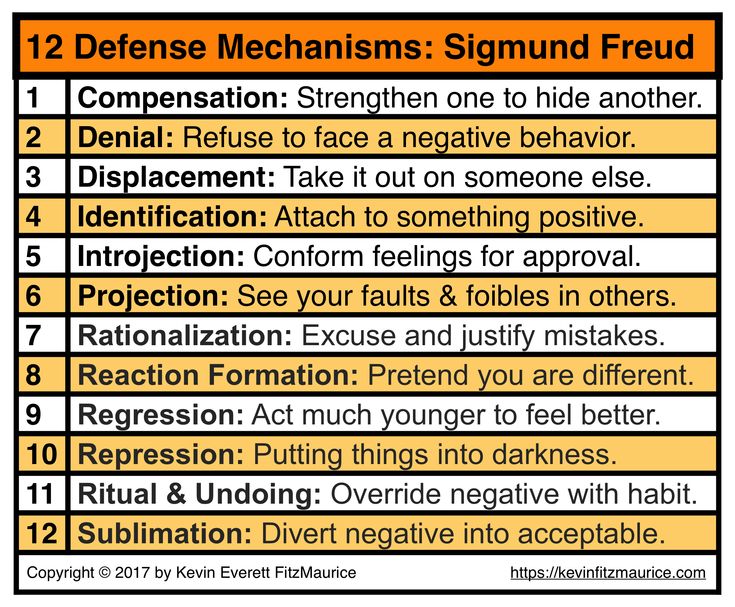
2. Projection
Projection is manifested in the fact that a person unconsciously attributes his feelings, thoughts, desires and needs to other people. This psychological defense mechanism makes it possible to relieve oneself of responsibility for one's own character traits and desires that seem unacceptable.
For example, unreasonable jealousy may be the result of the projection mechanism. Protecting himself from his own desire for infidelity, a person suspects his partner of cheating.
3. Introjection
This is the tendency to indiscriminately appropriate other people's norms, attitudes, rules of behavior, opinions and values without trying to understand them and critically rethink them. Introjection is like swallowing huge chunks of food without trying to chew it.
All education and upbringing is built on the mechanism of introjection. Parents say: "Don't put your fingers in the socket, don't go out into the cold without a hat" - and these rules contribute to the survival of children. If a person in adulthood "swallows" other people's rules and norms without trying to understand how they suit him personally, he becomes unable to distinguish between what he really feels and what he wants and what others want.
If a person in adulthood "swallows" other people's rules and norms without trying to understand how they suit him personally, he becomes unable to distinguish between what he really feels and what he wants and what others want.
4. Merge
There is no boundary between self and not-self in merger. There is only one total "we". The mechanism of fusion is most clearly expressed in the first year of a child's life. Mother and child are in fusion, which contributes to the survival of the little person, because the mother very subtly feels the needs of her child and responds to them. In this case, we are talking about a healthy manifestation of this protective mechanism.
But in the relationship between a man and a woman, merging slows down the development of the couple and the development of partners. It is difficult for them to show their individuality. Partners dissolve into each other, and sooner or later passion leaves the relationship.
5.
 Rationalization
Rationalization Rationalization is an attempt to find reasonable and acceptable reasons for an unpleasant situation, a situation of failure. The purpose of this defense mechanism is to maintain a high level of self-esteem and convince ourselves that we are not to blame, that the problem is not with us. It is clear that it will be more beneficial for personal growth and development to take responsibility for what happened and learn from life experience.
Rationalization can manifest itself as depreciation. A classic example of rationalization is Aesop's fable, The Fox and the Grapes. The fox cannot get the grapes in any way and retreats, explaining that the grapes are "green".
6. Denial
This defense mechanism allows you to ignore (deny) obvious facts, protecting the psyche from trauma. This is a complete rejection of unpleasant information. Denial is often the first reaction to the pain of loss.
7. Regression
Regression allows you to adapt to a traumatic situation due to an unconscious return to forms of behavior familiar from childhood: crying, whims, emotional requests, etc.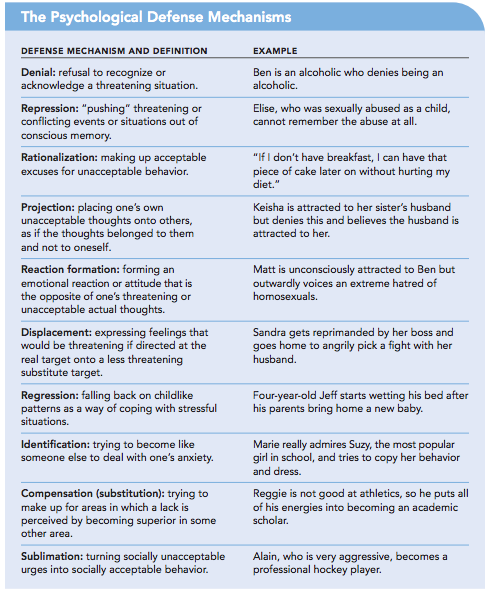 We have learned on an unconscious level that such forms of behavior guarantee support, safety.
We have learned on an unconscious level that such forms of behavior guarantee support, safety.
Regression makes it possible to throw off the burden of responsibility for what is happening: after all, in childhood, parents were responsible for a lot. The abuse of regression leads to the lack of a successful life strategy, difficulties in relationships with people around and the emergence of psychosomatic diseases.
8. Sublimation
Sublimation manifests itself in the fact that in an attempt to forget about a traumatic event, we switch to activities that are acceptable to us and those around us: we begin to engage in creativity or sports. Sublimation is a productive defense mechanism that has given the world a huge number of works of art.
It is much more useful both for oneself and for society to write poetry, draw a picture or just chop wood than to get drunk or beat a more successful opponent.
9. Reactive formation
In the case of reactive formation, our consciousness is protected from forbidden impulses, expressing opposite impulses in behavior and thoughts.